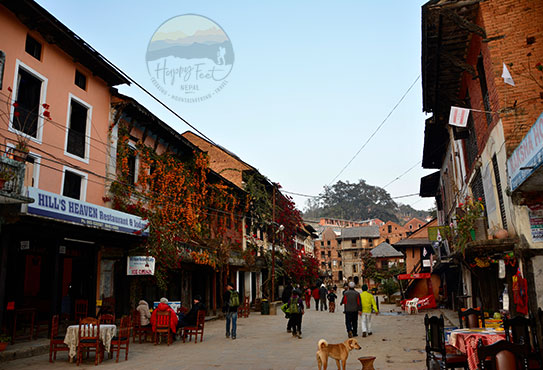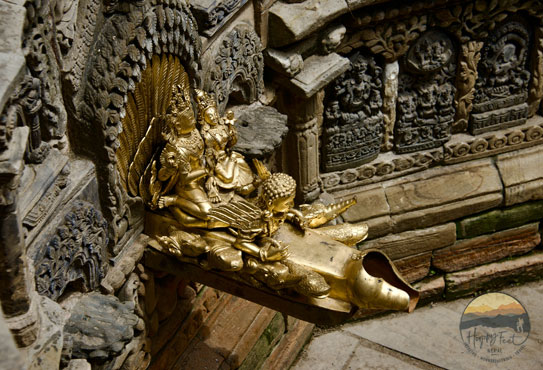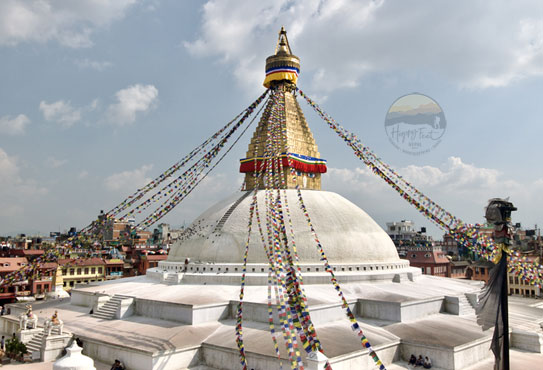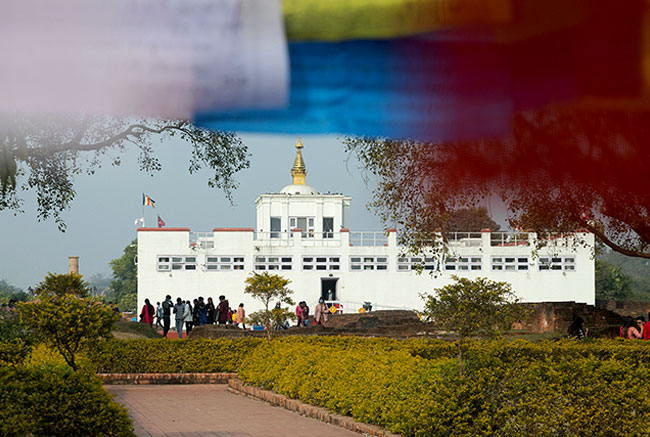-
Sunday - Friday: 9 AM - 4 PM
Lumbini Tour
Visit the birthplace of Buddha and the Buddha relic stupa, the holiest sites globally.
Tour Profile:
Accommodation: Hotels or Resorts
Lumbini: World renowned and globally holiest site, the birthplace of Lord Buddha
Tour Grade: Leisure with short walks and drive
Tour Duration: 2 nights 3 days (with overland or flights)
One of the World’s most important religious and spiritual sites, Lumbini, the birthplace of Lord Buddha, is located in the southwest Terai belt of Nepal. Lumbini is the warm sub-tropical flatland in the Rupandehi district of Lumbini State.
People come to Lumbini from all around the globe to attain religious merit and to see and learn about the birthplace of Lord Buddha. Maya Devi temple is the most sacred site in the Lumbini Garden. Another main attraction is the Ashoka pillar, erected by the great emperor Ashoka while visiting Lumbini in 249 B.C., inscribing the birthplace of Buddha. Moreover, Lumbini is a site with many monasteries built by different countries such as China, Japan, Sri Lanka, Myanmar, Germany, Thailand, and Korea in their respective architectural charms.
Lumbini, the most sacred site of Nepal, is reached by a long day drive or 50 minutes flight. The drive is long but offers an insight into the geography of the country, natural setting and way of living and conditions of its people.
Fly to Bhairawa for 50 minutes, transfer to the hotel and visit Lord Buddha’s birthplace.
Breakfast at the hotel in Kathmandu and transfer to Kathmandu domestic airport for a scenic flight to reach Far Southwest Nepal at Bhairawa airport. Upon arrival, meet our representative for less than an hour to drive to Lumbini, then check into your hotel.
The afternoon tour takes you to visit Lumbini, the Birthplace of Lord Buddha and other historical sites to see and learn.
The Sakyamuni Buddha, or the Gautam Buddha, the founder of the middle path of Buddhism, was born in the 6th Century B.C. According to Buddhist chronicles, Maya Devi (or Mayadevi) gave birth to Prince Siddhartha Gautama, the later Buddha, on the way to her parent’s home in Devadaha, on the full moon day of May of the year 564 B.C. Feeling labour pains, she grabbed hold of a tree branch and gave birth to Prince Siddhartha Gautama, the future Buddha.
In 249 BC, Emperor Ashoka visited Lumbini, constructed four stupas on the four sides of Lumbini, and erected a marking pillar, later renowned as Ashoka Pillar. The Pillar erected by Emperor Ashoka is inscribed, translating, King Piyadasi (Ashoka), which means devas’ beloved. Emperor Ashoka visited Lumbini in his 20 years of coronation and inscribed on his Pillar the Buddha Sakyamuni, the Bhagavan [“blessed one”] having been born here.
Later, the site was rediscovered in 1895 when a German archaeologist came upon Ashoka’s Pillar, identified by its inscription. Fa Xian, a Chinese pilgrim, records were vital to recognise this acclaimed holy site. The Birthplace of Buddha has been designated as a UNESCO World Heritage Site only since 1997.
This morning we visit the holiest and most historical Ramagrama Stupa, the Only Stupa Containing the Sacred Body Relics of Lord Sakyamuni Buddha, constructed some 2500 years BCE, located 50 kilometres east of Lumbini. Ramagrama is a site of great importance both for archaeological and pilgrimage. The Ramagrama stupa is believed to be the only stupa not interfered with by Emperor Asoka in the 3rd century B.C. and contains the body relics of Lord Shakyamuni Gautama Buddha. The Ramagrama stupa is the only one still in its original form among the eight Lord Sakyamuni Buddha’s relic stupas. Emperor Ashoka opened the rest of the seven stupas in the third century B. C. The relics from the seven holy stupas were redistributed to erect other 84000 stupas all over his country. Therefore, Ramagrama is one of the holiest pilgrimage sites for Buddhists and all races and religions loving peace. Ramagrama is at least once in a lifetime destination. Ramagram stupa is sacred because it contains relics of the Lord Buddha and is in its original form on earth. Therefore this stupa is pure and holy for devotion. The devotion leads to peace, a peaceful mind drives to harmony, the harmony transforms offerings into merit, and the merit opens the spiritual path. About 3 km southwest of the Ramgram stupa is Ujaingadha, now known as Ujaini, known as the maternal house of Gautam Buddha.
Visit and drive back to Lumbini—refreshing, lunch and rest. In the afternoon, visit the monasteries, World Peace Stupa, and Lumbini Museum and enhance your understanding of what happened here 2,600 years ago! Overnight at Lumbini
This morning, visit the ancient Kapilavastu town or the hometown of Prince Siddhartha, which is 29 kilometres west of Lumbini. The district is now named after the Ancient Sakya Kingdom, the Kapilavastu. The name Kapilavastu is believed to have been received from the great sage Kapila, who suggested the exiled prince and princesses of the Kosala kingdom settle at present-day Tilaurakot. It is believed that the later royal offspring of Kosala were known as the Sakyas and their empire as Kapilavastu. The holy site is where Prince Siddhartha spent his early 29 years of worldly life as a prince. He abdicated his prince hood, palace and kingdom at the age of his 29th and became a wandering monk. He rendered the dynamic message of free thinking, humanity, liberty, equality, fraternity, peace and nonviolence to the whole human race till his last breath, which shifted the consciousness of the entire human World, and it continues. Kapilavastu is a sacred place related to several return visits by Buddha.
After visiting the holy place of Lumbini, the birthplace of Lord Buddha and other areas of religious and historical sites, transfer to Bhairawa city airport for a scenic flight back to Kathmandu. On arrival at the airport, meet by Happy Feet Nepal representative and transfer to the hotel.
Lumbini is visited nearly all months of the year except monsoon, the wet months of mid-June to the mid of September. Though the most suitable time to visit Lumbini is from March to June, most days remain clear for views and flowers in the Lumbini garden in full bloom.
During the autumn/fall season, September to December is also the best time to visit this place when most days are fine and clear for breathtaking views.
The people from the Himalayas visit Lumbini from December to February to escape the cold of the Himalayas and the heat of the Terai Region, but the morning until 11 a.m. remains under winter mist.





